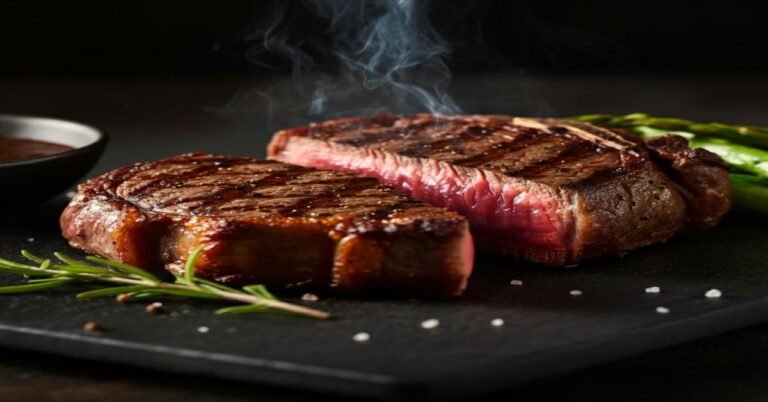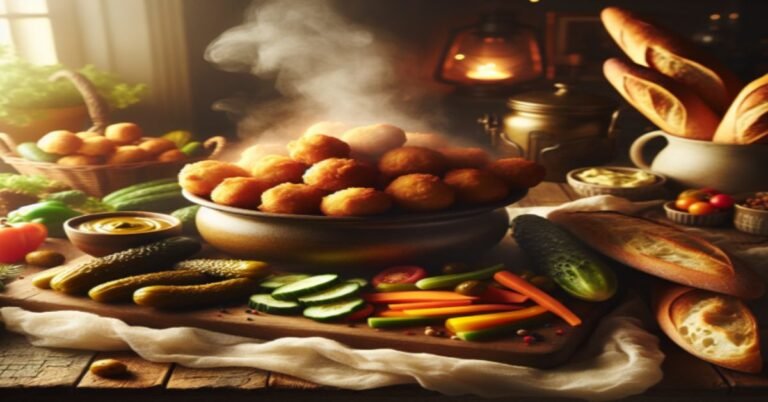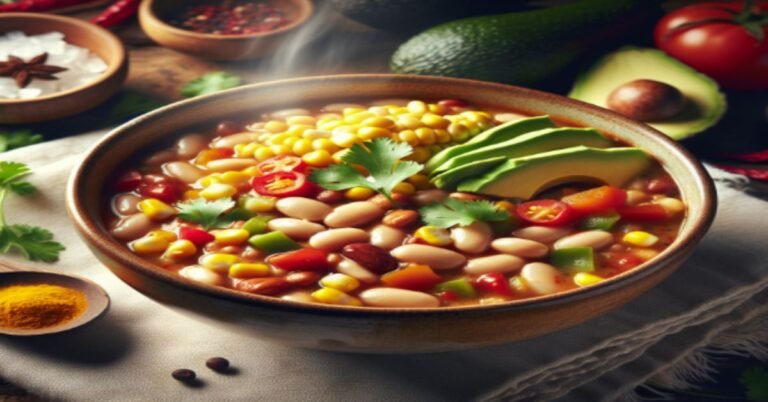Whipped Mashed Potatoes – The Comfort Food You Want to Eat
You shouldn’t underestimate the pure appeal of a cloud-pillowed mound of mashed potatoes on your plate. To others, it is the ultimate comfort food — a side that goes with everything from roast chicken to steak. But there’s more than one way to mash a potato. In comes whipped mashed potatoes, the fluffier version that takes this humble side to a whole new level. In this post, the history of whipped mashed potatoes, plus tips from home cooks on perfecting the dish. Above all, regardless of how long you may have been eating or cooking for this matter, these simple concepts will expediently educate you to perfect that darling but difficult dish.
Mashed potatoes have gone from traditional to whipped
Mashed potatoes have been a culinary delight for centuries, did you know that? The potato, for example, was first grown in Peru by the Inca civilization back in 5000 BC. But mashed potatoes started their worldwide culinary journey when Spanish explorers brought them back to Europe in the 16th century. Historically, these potatoes were boiled and mashed with a handheld masher — still the preferred method in many kitchens today. However, mashed potatoes changed as techniques for cooking grew more sophisticated. Whipped mashed potatoes, prepared with a whipping method to add air and achieve a lighter, fluffier texture first appeared in the 20th century. The change was likely propelled by the strong desire for restaurant-quality plates at home.
Ingredients List for the Most Perfect Whipped Mashed Potatoes
Whipped mashed potatoes start with the right ingredients!!! What kind of potato—Yukon Gold potatoes have a very creamy texture, whereas Russets are fluffier. Both are top choices, so it depends entirely on your personal preference. Next, consider the dairy. Classic choices include whole milk and unsalted butter, but the cream will work too, as will low-fat versions — you’ll see that all are quite delicious. The same applies to seasoning: salt and pepper are a must, but garlic, herbs, or cheese can add even more dimension.
The Art of Mastering the Whipping Technique
The key to fluffy whipped mashed potatoes is technique. Boil the potatoes until tender and be sure to drain them well – we don’t want extra water hanging out in our mashed potatoes. When they are drained is the moment to whip them. It is best to use an electric hand mixer or stand mixer for the job, so you can whip the potatoes to fluffy and airy perfection. First start with the butter; melting through hot potatoes gives a creamy base. Add your dairy of choice a little at a time, whisking until your desired consistency is reached. Be careful not to over-whip or else they’ll be gloppy from releasing too much starch so whip just until you have the desired fluffiness (but stop before it starts turning into glue).
Tips for Enhancing Flavor
If you dare to go beyond that and are jazzing up your whipped mashed potatoes, think flavor boosters. Combined with a spoonful of sour cream or a drop of buttermilk, that serves up a tartness to balance the starchy potatoes. Roasted garlic loses its bite while providing a subtle, savory quality when whipped into the potatoes. Chives, parsley, or rosemary add color and taste. For a touch of decadence, cheese lovers may enjoy a pinch of parmesan or cheddar, which will melt into the potatoes. After all, a little black pepper or a new oil rub yields also contrasts for the eyes and palate.
How To Make Whipped Mashed Potatoes Homemade
Choose only good, Yukon Gold or Russet potatoes. Peel and cut them into equal-sized pieces for even cooking.
- Boil and Drain Potatoes: Put potatoes in salted water and cook Cover and boil until fork tender — approximately 15-20 minutes. Drain and let the water out somewhat.
- Mash and Whip: Start potato mashing with a masher or ricer. Slowly add in warm milk and butter, then beat with a hand mixer until fluffy.
It takes lowly potatoes and makes them into a decadent side. Note: remember to be patient — you want smooth, lump-free results so take your time here.
BEST TIPS FOR MAKING THE PERFECT TEXTURE AND TASTE
Yes, you know this already: Whipped mashed potatoes are not just any old recipe that you can follow. Here are a few insider tips:
- Warm Your Dairy: Even cold milk or butter can shock the potatoes, leading to a gluey texture as well. Always warm up your dairy a little before adding to the potatoes.
- Don’t Overmix: Overbeating activates the starch in potatoes, making them even more gummy. The goal here is to mix until they are nice and fluffy.
Season to Taste
Potatoes are salt’s biggest fan, so don’t be shy about the seasoning. Be sure to taste often — you want a perfect balance.
These little tweaks can have a major impact on your finished product, evolving your mashed potatoes from amazing to legendary. Alternatives and Cheatings: How to Upgrade Whipped Mashed Potatoes. If you enjoy whipped mashed potatoes, they are so adaptable depending on your tastes:
- Garlic Lovers: Roasted Garlic — Use roasted garlic for an extra depth of flavor or a nice and savory taste.
- Herb Infusion: You can also add fresh herbs, like thyme or rosemary, into the mix for a fragrant flavor profile.
- Cheesy Delight: As long as you throw in some Parmesan/cheddar cheese. Trying these alternates can upgrade your dish to be the highlight of every meal. Allow your creativity to flow!
How to serve Whipped Mashed Potatoes
Fluffy mashed potatoes go with just about everything. They are a traditional accompaniment to roasted meats such as chicken, beef, or lamb, offering a creamy complement to savory taste. You could pair them with grilled vegetables for a veggie meal or, if you are not vegan, a mushroom gravy. They also do well for holiday dinners as a cozy base for some fine mains. While whipped mashed potatoes offer rich, creamy comfort, pairing them with a light and refreshing Strawberry Quinoa Salad creates the perfect balance. Also, if you want to transform your whipped mashed potatoes into an exciting dish by serving them alongside Fried Pickle Dip. Whatever you use, whipped mashed potatoes will be a hit.
How do you store whipped mashed potatoes?
Although these whipped mashed potatoes are best served fresh, you can always store and reheat them to enjoy! Leftovers should be stored in an airtight container and kept in a refrigerator for 3 days at most. When it’s time to reheat them, here are a few ways to keep them the way they were in their original best state.
A microwave does the job for small amounts. Add potatoes to a microwave-safe dish and cover lightly with plastic wrap or a lid for steaming. Microwave in short bursts, stirring between to evenly distribute the heat. If you have a big batch, the oven works better. Put the potatoes into an oven-safe container, cover with foil, and place in the oven at 350°F (175°C) for approximately 20 minutes, stirring halfway. When reheating, stir in a splash of milk or knob of butter to reinvigorate the creaminess.
Reheating is what makes frozen whipped mashed potatoes still taste so good — heat them up but not too much, as excess heating can affect the volume and texture.
Whipped Mashed Potatoes: Weeknight Dinners to Holiday Feasts
Whipped mashed potatoes are great for special occasions, and they also make the best side dish anytime you crave comfort food. You could serve them at family dinners for that warm, homey feel, or fancy it up for holiday feasts with a drizzle of truffle oil and/or bacon bits. Warming and introducing happiness to the table, with the best versatility and universal appeal, make them a go-to food for banquets both big and small.
Fortunately, there are healthier swaps available as well as alternatives for a low-carbohydrate diet. If you want to experience whipped mashed potatoes the healthy way, here are a few ideas:
- Low-Fat Dairy: For a lightened-up version, instead of whole milk and butter substitute low-fat milk or yogurt.
- Olive Oil: Replace butter with olive oil to cut back on saturated fat.
- Cauliflower Blend: Add cauliflower puree to reduce calories and increase nutrients.
Well, these alternatives can save you from inhibiting your dietary goals so that you can enjoy the creamy goodness of whipped mashed potatoes.
Humans love mashed potatoes, but per region, it differs from the original way. They’re very buttery, sometimes garlicky in France, where they are called “pommes purée.” Another Irish version, called “colcannon,” mixes mashed potatoes with kale or cabbage for a comforting combination. In the U.S., on the other hand, adaptations include chive-topped and jalapeño-infused supermarket or deli takeout. Getting the ideas in these regional spins can help you to consider how things might find their way into your whipped mashed potatoes.
Historical Importance and Cultural Heritage
The history of potatoes is not only very long, but also connected to the culture and food systems of many places. Potatoes were first brought to the world over 7,000 years ago in the Andes of South America and slowly spread to Europe during the late 16th century. The potato profoundly influenced the Irish economy and history, with the notorious mid-1800s Potato Famine leaving nothing short of dramatic changes in the demographics of the country. The potato is now a celebrated food all over the world for its versatility and inclusion in many favorite foods, such as whipped mashed potatoes. This expedition through culture demonstrates the tireless versatility and universality of this benign bulb. The case for keeping whipped mashed potatoes on your table.
Whipped mashed potatoes are more than just a delicious side dish; they bring comfort, versatility, and even a bit of sophistication to any plate. We can find a rich history of their own, and the endless variations and combinations guarantee that they will continue to occupy a permanent place in kitchen cabinets around the globe. From family dinners to special occasions, whipped mashed potatoes are a classic comfort food that humans have enjoyed for centuries and continue to enjoy one creamy bite at a time.
Invite Readers to Share Whipped Mashed Potato Tips and Creations
With the tips for making superb whipped mashed potatoes laid out above, though, you now know how to do it. Otherwise, we’d love to see your creations & any tips you have in the comments below! Tell us if you tried a new spicing or something else to plate them up with. Get in touch with other food junkies, and motivate everyone to join the movement of whipped mashed potatoes.
In Closing
To sum it all up, whipped mashed potatoes are not just a side dish — they are an iconic tradition that goes beyond borders, passed down from generation to generation. The comfortable flavor and the Creamy texture; give them a part of every meal in the world. Just the classic buttery version (or with all sorts of creative spins off of it, including whatever weird regional style you are serving) when covered in whipped mashed potatoes, takes eating to another level. They will forever remain a cherished staple in frying pans around the world, as their versatility and ingredient appeal mean there is a taste for everyone and an occasion to include them on the menu. We invite you to explore your creativity in the kitchen and allow whipped mashed potatoes to become part of the way wholesome memories are made.
FAQ’s
Can I use a food processor to whip mashed potatoes?
It’s best to avoid a food processor, as it can overwork the potatoes and make them gluey. Instead, use a hand mixer, ricer, or potato masher for better results.
What makes Yukon Gold potatoes a great choice for whipping?
The naturally creamy texture of Yukon Gold potatoes yields smooth, velvety mashed potatoes. This combined with their mid-ranged starch content, makes them the best potato for whipping.
Once cooked, how do I store the leftovers and quickly reheat them?
Refrigerate the whipped mashed potatoes in an airtight container for up to three days. Reheat slowly on the stovetop or in the microwave, stirring in a splash of milk or butter to bring back their creaminess.
What nutrition is Whipped mashed potatoes?
Nutritional information will vary due to the use of different ingredients, but on average 150–200 calories, 3–5 grams of fat, 25–30 grams of carbohydrates, and 3–4 grams of protein.








